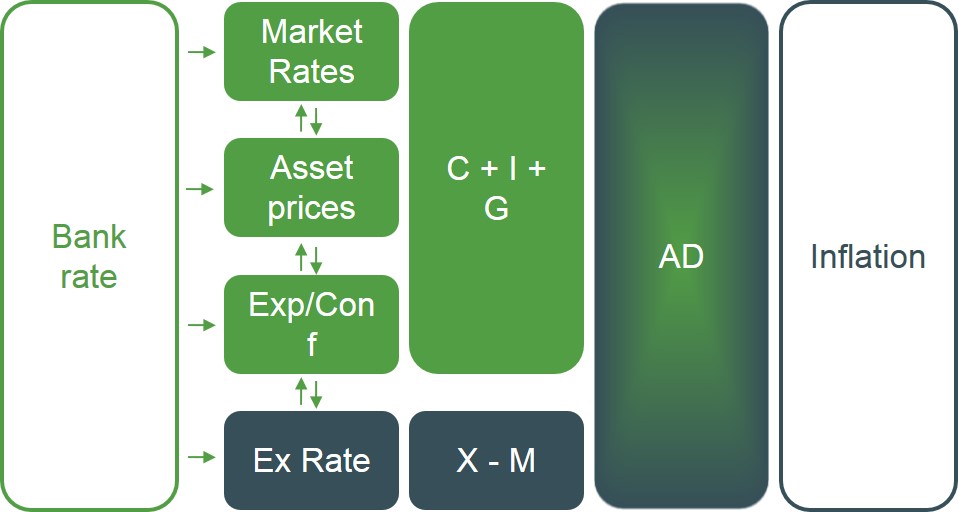A model that explains the impact of monetary policy on an economy. Below is a simplified version of the transmission mechanism to identify the main channels in which a change in the base rate ultimately affects the economy.
First of all it is important to identify that when the base rate changes this also affects all the other interest rates in the economy - both short and long-run - which will make changes to the availability and ease at which businesses and consumers can acquire credit. For instance if the base rate is cut this should lead to cheaper borrowing from banks to customers. Which in turn fuels higher consumption and investment contributing to higher demand.
This base rate cut will also cause asset prices to surge as asset's become more valuable when deposit interest falls.
A cut in the base rate also causes the exchange rate to depreciate and the domestic currency gets weaker relative to foreign currencies because of hot money flows out of the economy. This makes exports cheaper and imports more expensive, boosting a country's trade position and AD.
All of these effects accumulate and create inflationary pressures in the economy. Higher interest rates will have the opposite effect and will reduce inflationary pressure. Central bank's are able to influence the rate of interest in the economy and use this as the main policy tool for regulating the rate of inflation.
